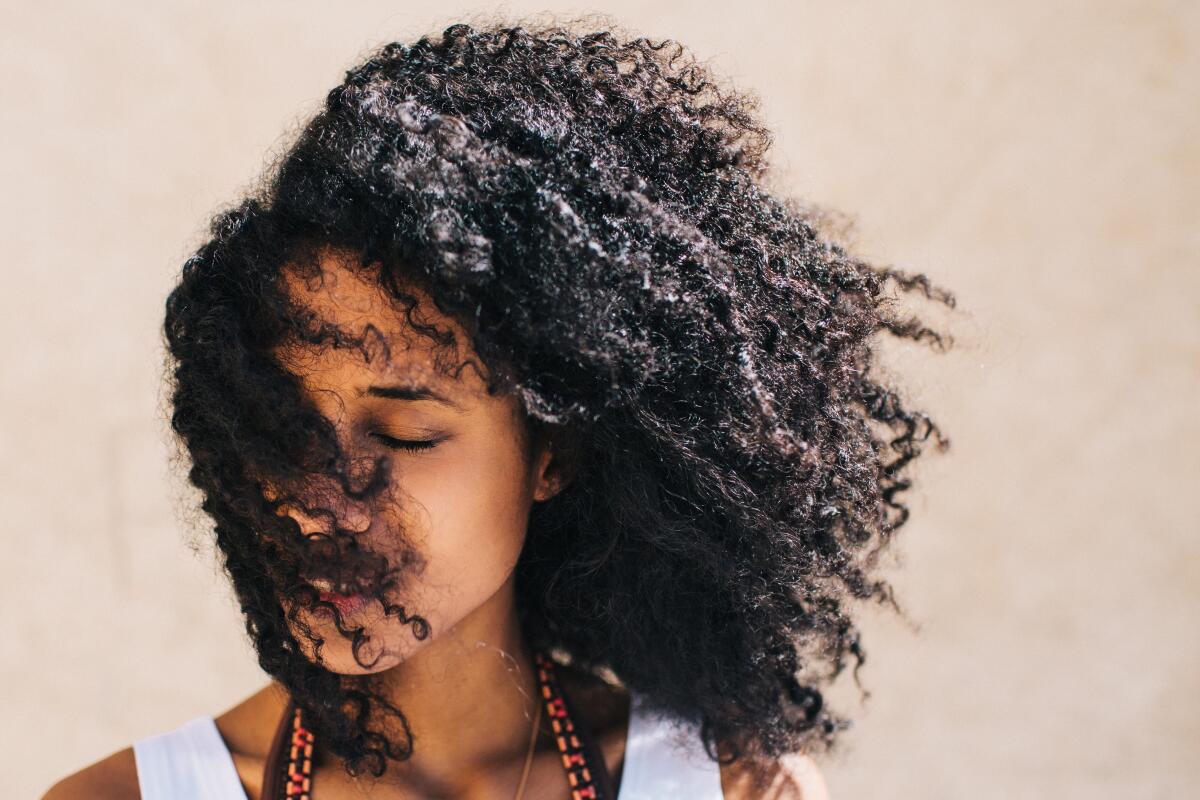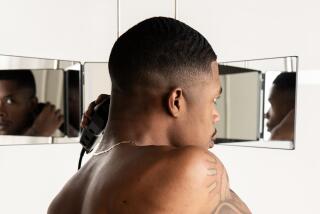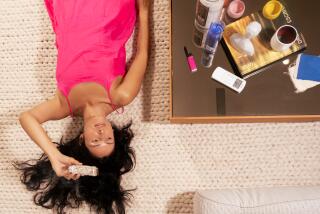Go natural, try a new style or panic? How black women in the coronavirus era deal with their hair

- Share via
Tia Delaney has been seeing the same hairstylist once or twice a week for more than 20 years. Now that the COVID-19 pandemic has closed all nonessential businesses, she’s facing a dilemma familiar to black women across the country: What should she do with her hair?
“I have no idea,” said Delaney, a registered nurse and clinical case manager who has continued to visit three to six patients a day at their homes.
“Of course, I know how to wash my hair, but washing it and being able to style it where I feel I look presentable is going to be complex. And if you don’t normally wear a natural style, it’s not something you can just do overnight.”
Stay-at-home orders have shuttered salons and beauty supply stores, while social distancing has made house visits a risky endeavor for hair braiders and their clients. Black women have had to adjust: Some women are taking the time to go natural and give their hair a break from weaves, chemicals and heat styling; some are continuing to braid their hair or learning to braid for the first time; a few are confronting their natural hair texture after an extended break and panicking.
The salons, beauty supply stores and stylists that cater to black women are also adapting by revamping their digital presence with instructional videos and the sale of products online.
Felicia Leatherwood, a celebrity hairstylist who has worked with Issa Rae of “Insecure” and director Ava DuVernay, said some black women are experiencing “anxiety on top of anxiety” right now.
“They have anxiety about what’s happening, and then they have anxiety about discovering their hair and working with it and realizing that they actually have not liked their hair, never really liked their texture,” she said.
Part of the challenge for women is the mental hurdle of working with their hair on their own, especially for those with denser textures, she said. She plans to launch a video series in which she answers questions submitted by her followers in short clips showcasing their hair.
Pro hair colorists and stylists in L.A. offer tips and tricks on how to best tend to hair growth during quarantine.
Leatherwood said women need to channel “Little House on the Prairie” and make do with what they have at home. One woman who contacted her didn’t have any products, not even shampoo or conditioner. But she did have Dr. Bronner’s Pure-Castile soap, an avocado and an aloe vera plant. Leatherwood said Dr. Bronner’s soap can be used as shampoo in a pinch, and she instructed the woman to make a hair treatment masque out of the avocado and aloe vera to keep her hair soft.
She said women also need to have products on hand to hydrate their hair. She recommends the Curls, Aunt Jackie’s and Maui Moisture brands for all hair textures.
Tallulah Marcelin, owner of I Love Lulu — an L.A. salon that focuses on natural hairstyling — said people who are concerned about tangles while shampooing their hair can divide it into braided sections, wash it and rinse. “You’re mainly trying to clean your scalp of build-up and sweat and things like that, and then you’re trying to remove product from your hair without stripping it,” she said.
Marcelin recommended women also make an effort to keep their hair moisturized.
“This is the time to really saturate your hair with oils and butters and conditioners and twist it up,” she said. She recommended taking a silk or cloth scarf and making a turban around the braided hair.
Trends in the beauty and hair-care industry show that black women have been shifting away from chemically straightening their hair and focusing more on looks that don’t subject their hair to damage from frequent styling. Between 2015 and 2019, braids with extensions increased in popularity by 64%, wigs increased by 79% and weaves increased by 47%, according to analyst Toya Mitchell of Mintel, a global market research firm.
Delaney, 50, said she’s not uncomfortable with her natural hair but also would be self-conscious about trying out a new hairstyle at work. Before the salon closures, she typically would get her hair washed, blow-dried, straightened and styled in a ponytail or loose curls. She acknowledged it would probably affect her more than her patients.
“I think people in my generation, we still fall under that stigma as to how is our hair looking and how does it represent us,” she said. “And the younger generation, I think some of that stigma has been removed, and so they’re more comfortable with the natural hairstyles.”
Talia Wray, a 27-year-old actor-model in Studio City, said that before the shutdown her hair routine consisted of visits every couple of months to a salon in Beverly Hills that caters to curly hair, where she’d get a hair cut and highlights. She’s using her time now to deep condition overnight and detangle her hair section by section. For easy styling, she blow-dries her hair straight and has been wearing it in a ponytail or bun.
“With curly hair, the whole point of doing five different curly products is to maintain moisture, so that you can wear it out as long as possible,” she said.
Wray said several of her friends have also taught themselves how to braid their hair.
“I definitely have friends who were like, ‘It wasn’t how I wanted it to turn out,’” she said. “But for the purpose of it’s just maintaining and no one’s seeing me, unless it’s my close friends, like on Instagram, I feel like a lot of people are less worried about vanity and it’s more ‘How do I maintain and care for my hair?’”
Other women need a little help in their transition. Tammy Wesley-Omordia, a cosmetologist and the owner of Superstar Hair & Wigs beauty supply in Studio City, said she noticed her clients were switching to lower-maintenance looks. After she closed, they started sending her direct messages on social media, asking her to ship them packages of braiding hair, crochet hair, head wraps and hair treatments, she said.
“Some people are going natural, and where I live — that’s an area where everybody wants to look like Hollywood,” Wesley-Omordia said. “So for them to go natural is a lot. ‘Oh, let me take this weave out. Let me take these extensions out. Let me take this wig off and let my hair breathe.’ A lot of people are doing that.”
Some stylists said they’re still getting messages from women who want to book hair appointments.
“People are still trying to get their hair done, and I’m like ‘guys!’” said Tanasia McLean, a hair braider at Hair Are Us in Los Angeles. “I stopped doing hair because I’m really concerned about everybody’s health. I didn’t want to continue doing hair and make a mistake and get someone sick or get sick myself.”
Marcelin said she understands why clients are reaching out. “There is a sense of normalcy and peace and happiness when your hair is done,” she said. “It makes you kind of feel like, ‘OK, I’m not just totally letting myself go.’”
For now, women like Delaney are learning to style their hair at home. She said she planned to separate her hair into two-strand twists while it’s wet, then unravel them to create a wavy look with the help of her daughter.
“I’m sure at the end of the day I’m going to come up with something cute,” Delaney said. “There are so many YouTube videos now of things you can look at and different ways to do your hair naturally, so we’ll figure it out.”
More to Read
Sign up for The Wild
We’ll help you find the best places to hike, bike and run, as well as the perfect silent spots for meditation and yoga.
You may occasionally receive promotional content from the Los Angeles Times.











